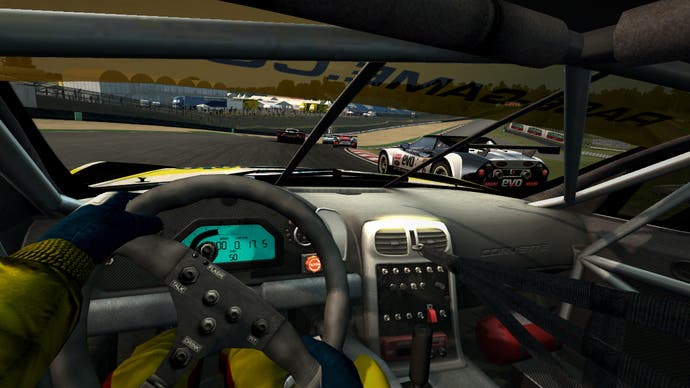RACE Pro
Engine and tonic.
Despite being over six feet tall, I used to drive a Mini. A proper old Mini, like in The Italian Job. I loved that Mini. I miss that Mini. As any fan of the diminutive car can tell you, there's something special about them, and you can feel it in the way they drive. The first car you get in the career mode of Simbin's debut console racer is a Mini, and it's a testament to the Swedish studio's oft-acclaimed skill that the digital version retains that unique and intangible Mini feel.
It's the sort of positive first impression that bodes extremely well for the game as a whole, and long-time fans of Simbin's long-running GT series will be pleased to learn that its attention-to-detail and depth of understanding when it comes to the physics and handling of virtual vehicles has crossed the PC-console divide intact. Race Pro may not be the most inspiring title for a game, but it's perfectly apt. This is a game made by people who know racing - Simbin founder Henrik Roos used to be a professional GT Championship driver.
His company's PC series has a devoted legion of fans, but the games are notorious for their unforgiving simulation approach. Are wussy console gamers ready for such ferocious fealty to real life? Actually, as it turns out, they don't need to be. Race Pro has the depth, but it also has a thoughtful training slope to ease you in. It's perhaps the most accessible hardcore racer to grace a console.
The heart of the game, as always, is the career mode. Here you work your way through eight race groups, each containing up to seven different contracts. You must buy into each contract using credits, which you earn based on performance in races. The amount you pay, however, will vary depending on whether or not you pass the tryout time trial for the contract. Pass the test and the cost of entry drops sharply. If you just can't beat the time - or can't be bothered - then you can pay over the odds and get the contract anyway.

The flexibility continues once you're ready to race. You can tackle each contract at amateur, semi-pro or pro levels. The higher the standard, the higher the credit payout for victory. Racing at the top professional tier, however, means that you get no racing assists whatsoever. Amateurs, on the other hand, can make the game as easy - or as hard - as they like, with complete freedom to tweak the anti-lock brakes, traction control, stability assistance and racing line indicator. As your confidence increases, so you can slowly let go of your helping hands in whatever configuration works best for you.
On the track, you'll see just how important these features are. Racing as a professional shows off the phenomenal physics and handling, but will leave most fair-weather racers seething with frustration. You need to not only understand advanced racing concepts but take advantage of them, usually at horrifying speeds. Each car, from the aforementioned Mini through to various Caterham models, Audis, Viper Coupes and Formula BMWs handles noticeably differently from the moment you take the wheel. The pull of inertia as you hit the apex of a turn, the sudden thrust of forward momentum as you slipstream an opponent - these subtle feelings are conveyed effectively and economically, and feel so natural that performance improvements become instinctive rather than cerebral. The challenge ultimately comes not only in mastering each track, but tailoring your approach depending on the car; a familiar corner can be your undoing if you're in an unfamiliar ride.


